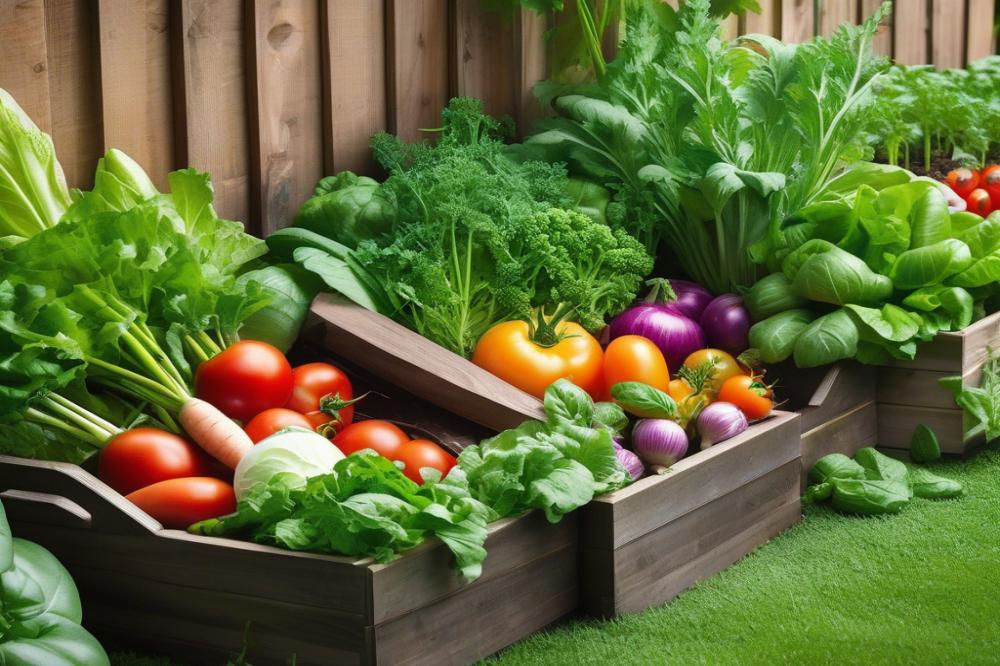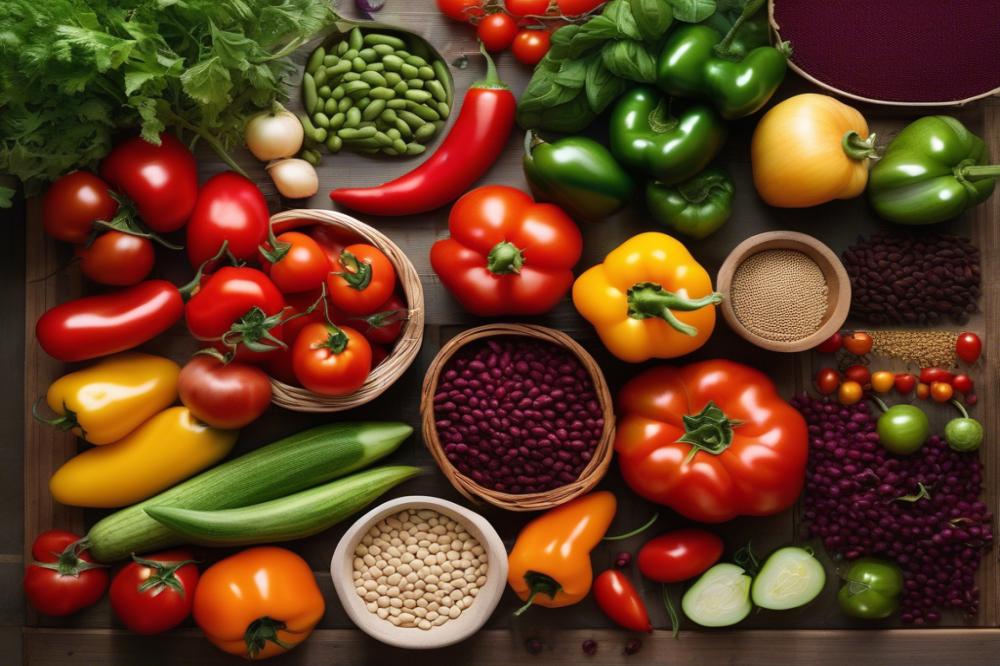Introduction
Pruning is an essential technique in gardening that can significantly enhance the growth of many plants. This practice helps shape the plants, allowing them to thrive and produce more fruit. With the right approaches, gardeners can optimize their tomato care routine to ensure stronger plants and better yields.
Tomato varieties come in numerous shapes and sizes, making them a favorite among home growers. Healthy plants require careful attention to detail, including watering, feeding, and light exposure. However, one aspect often overlooked is the effectiveness of pruning techniques. Properly managed, these strategies can lead to improved branch structure, making room for more tomatoes.
Benefits related to pruning extend beyond the physical shape of tomato plants. It can also enhance plant health by removing unhealthy or overcrowded branches. Gardeners who focus on this method often find that late summer pruning can lead to increased fruit production. This boost in yield improvement becomes evident as the growing season progresses. Through branch removal and strategic trimming, you can encourage your plants to direct their energy to stronger stems and fruit-bearing areas.
Prune Tomato Plants: Understanding Basic Techniques


When it comes to growing tomatoes, basic pruning techniques can profoundly impact yield improvement. Some common methods include suckering, which involves removing the small shoots that emerge in the leaf axils. This allows more energy to go into the main stems and fruit. Additionally, branch removal can also help. By taking away crowded leaves and stems, plants can receive better light and air circulation. This is essential for healthy growth.
Timing is crucial in the pruning process. It’s important to know the right moment to prune for optimal plant health. Late summer pruning can be beneficial, but it’s best to avoid it too close to harvest. Doing so may stress the plant and inhibit fruit production. Instead, early pruning in the growing season encourages stronger plants that are more capable of delivering results. Monitoring the plants regularly will help guide your pruning schedule.
Understanding Tomato Varieties
Moreover, differentiating between types of tomato varieties helps tailor your approach. Indeterminate varieties tend to grow tall and require more frequent pruning. They keep producing fruit throughout the season. Determinate types, on the other hand, have a set growth period and shorter stature. These may require less pruning. Understanding the specific needs of each tomato type can assist with overall gardening tips and techniques.
Your methods should align with the specific growth habits of the variety you’re cultivating. Knowing what works best for your chosen tomatoes will make a difference. For instance, indeterminate plants benefit from the removal of suckers to produce larger yields. Each pruning technique serves a purpose. By taking the time to learn, you prepare your plants for a bountiful harvest.
Essential Pruning Techniques for Optimal Growth


Branch removal is a vital practice in tomato care, especially for enhancing plant health. Cutting away excess branches allows the plant to focus its energy on fruit production. When you see growth that seems weak or crowded, consider removing those branches to promote better air circulation. Plants thrive when they have room to breathe, so pruning can be a game changer.
Suckers are small shoots that emerge between the main stem and branches. Managing these suckers is crucial for encouraging stronger growth. These tiny growths can sap nutrients from the main plant, leading to fewer tomatoes. Pinch off suckers early, ideally when they are still small. This action helps direct energy into the fruiting branches instead of the unnecessary growth.
Guidelines for Determining Which Leaves to Remove
When pruning, not all leaves need to go. Focus on removing the lower leaves that are yellow or damaged. These leaves often do not contribute to the plant’s health and can become a host for pests. Additionally, consider the needs of various tomato varieties. Some types may tolerate a bit more foliage than others without affecting yield improvement.
Late summer pruning can also play a role in maximizing your harvest. This technique involves trimming back some leaves to let in more sunlight, which benefits the ripening fruit. Look for areas where light is not reaching and remove excess foliage to improve growth all around. Following these steps will help achieve a healthier plant.
Timing Your Pruning for Maximum Yield


Best Times to Prune Throughout the Growing Season
Pruning your tomato plants is not a one-time task. Start pruning when the plants are about 12 to 18 inches tall. This initial pruning helps shape the plants and encourages strong growth. As the season progresses, regular inspections are necessary. Look for suckers, especially in indeterminate varieties. Removing these small branches early allows the plant to focus on fruit development. Every new flush of growth offers an opportunity for branch removal, improving airflow and light penetration.
The Role of Late Summer Pruning
In late summer, a more selective type of pruning can be beneficial. This time is critical because plants are in full swing of fruit production. Cutting back excessive foliage can redirect nutrients to the remaining fruits. Keep an eye out for any dead or yellowing leaves as well. These can be removed without harmful effects. Pruning late in the season also triggers the plants to focus on ripening current fruits rather than producing new ones.
How Pruning Timing Affects Fruit Production
Understanding when to prune is essential for optimal tomato care. Timing plays a key role in the overall health and yield improvement of your plants. Pruning too late may result in fewer fruits or underdeveloped ones. Conversely, cutting back too early can stress the plants, leading to reduced growth. Adjustments to your pruning techniques during the season can enhance plant health significantly. Remember, ensuring you follow the right schedule can make a distinct difference in your crop yield.
Each tomato variety may respond differently, so observe what works best in your garden. Use these gardening tips to refine your approach. Tailor your pruning to suit your specific conditions and monitor the effects on fruit production. Make sure to enjoy the process and learn from each season.
Advanced Pruning Techniques for Experienced Gardeners
Strategies for Selective Pruning for Yield Improvement
Selective pruning can greatly enhance your tomato care routine. By focusing on the most productive branches, you can direct energy towards fruit production. Remove excess foliage that does not contribute to fruit. This encourages better air circulation and sunlight exposure. When pruning, always have a plan. Identify areas on the plant that are crowded or weak. Cutting back on unnecessary growth can lead to healthier plants and more robust yields.
Managing Multi-Stemmed Plants Through Strategic Branch Removal
Multi-stemmed plants can be tricky. They often require thoughtful pruning techniques to reach Maximum Yield. Choose the strongest stems to support your crop, and use branch removal to eliminate weaker ones. This not only boosts plant health but also improves fruit quality. Aim for an open structure that allows sunlight to penetrate. If left untreated, these plants can become overly tangled, limiting productivity.
Case Studies on Successful Pruning Practices for Different Tomato Varieties
Different tomato varieties respond uniquely to pruning. For instance, indeterminate types thrive with more aggressive late summer pruning. In contrast, determinate varieties may only need light trimming. Gardeners have found that timely branch removal boosts yields significantly. Observations show that heirloom tomatoes also benefit from selective pruning. A well-timed cut can lead to larger, richer fruit. Each type of tomato may demand a different approach, so stay mindful of their characteristics.
Remember that pruning is as much an art as it is a science. The better you understand your plants, the more successful your gardening journey will be. Focus on these strategies, and you’ll likely notice a difference in your harvest.
Common Mistakes to Avoid When Pruning Tomato Plants
Many gardeners encounter typical pitfalls when they undertake the challenge of pruning. One common error is removing too many leaves. This can expose the fruit to harsh sunlight, potentially causing sunscald. Others might neglect branch removal altogether, leaving plants overcrowded. When plants are too dense, air circulation suffers, leading to disease and reduced yield.
Another mistake arises from improper timing. Late summer pruning can be detrimental as it might shock the plant right before harvest. Plants need energy to grow and mature fruit. In contrast, pruning too early can stunt growth in young tomato varieties. Careful consideration of timing is key to successful tomato care.
Incorrect pruning methods can directly hinder plant health. Cutting stems at the wrong angle can cause damage and attract pests. Keeping tools clean is essential to avoid spreading diseases during the pruning process. Gardening tips like this can make a big difference, especially if you are pruning multiple plants.
Pay attention to your pruning techniques. Each cut should enhance fruit production and overall plant vitality. Some gardeners underestimate the importance of precision. Aim to prune judiciously, allowing light to penetrate while removing unwanted branches. Too much emphasis on aesthetics can lead to neglecting health and yield improvement.
Monitoring growth is crucial as well. After pruning, observe how the plant responds. If it looks stressed or begins to wilt, reevaluate your methods. Remember, every tomato plant is unique, and different varieties may require specific care. Documenting your pruning can help identify what works best over time.
Stay consistent with your pruning schedule. Regular maintenance can promote vitality and prevent problems early. Over time, you’ll find a rhythm that suits both your gardening style and your tomato plants. Avoid being overly aggressive, as this can stunt overall growth, affecting the future harvest.
Final Thoughts on Pruning for Maximum Yield
Pruning is crucial for those looking to maximize their gardening success. By removing unnecessary growth, you allow your tomato plants to focus their energy on producing fruit. It’s not just about cutting back; it’s about understanding the plant’s needs. This practice promotes better airflow and sunlight, which are vital for healthy growth and abundant harvests.
When it comes to best practices, timing is important. Regularly check your plants for suckers, especially during their active growth phases. This can help maintain their structural integrity while maximizing yield. Additionally, using the right tools matters too. Sharp, clean pruners can prevent damage and disease. Remember to sanitize your tools between cuts to protect your plants.
The techniques you’ve learned are not just theory. They can make a real difference in your tomato care routine. Don’t hesitate to implement these strategies in your own garden. Watching your plants flourish will be rewarding. Every slice and trim can bring you one step closer to a bountiful harvest.



